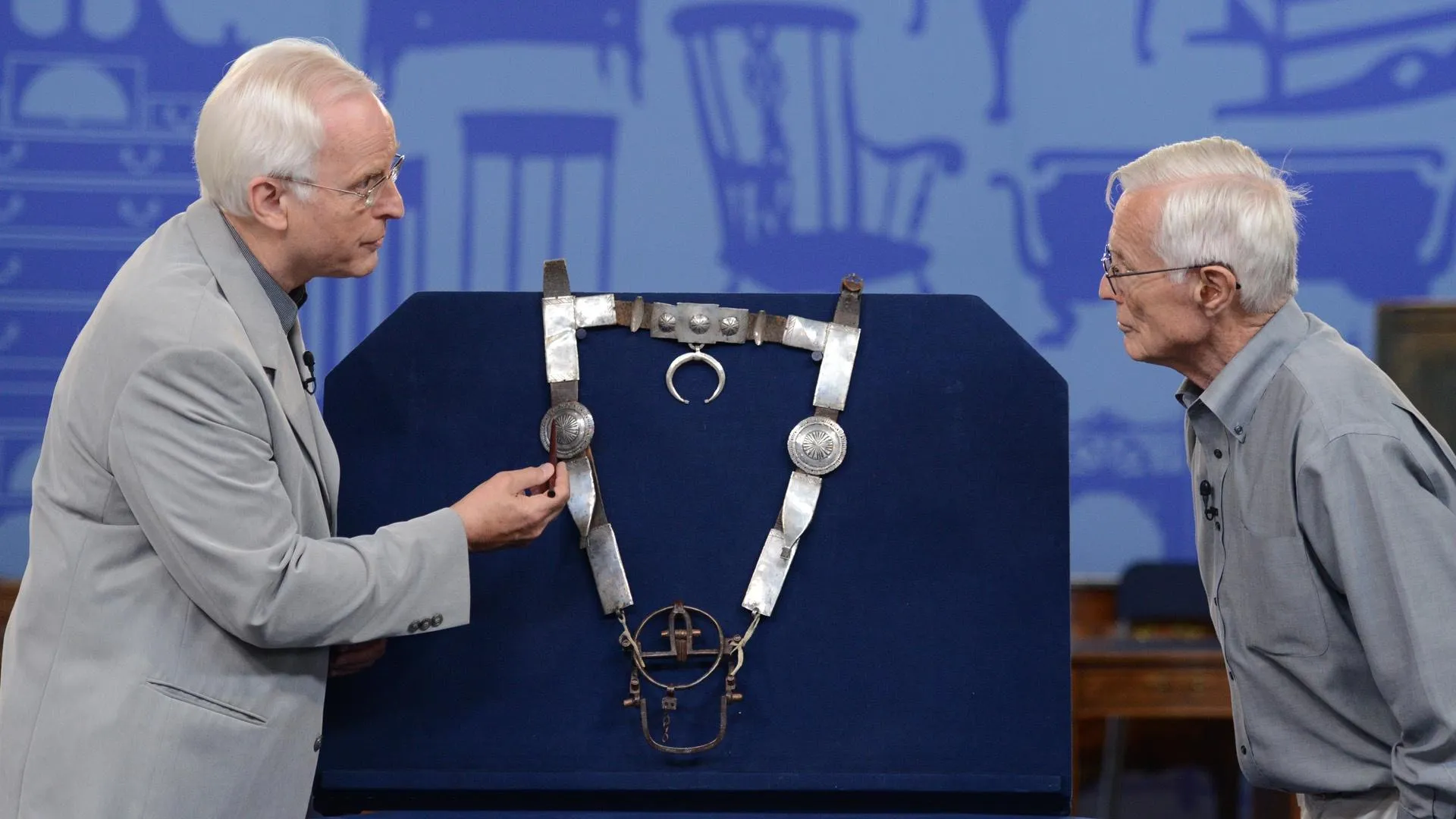GUEST: I purchased this bridle approximately 30 years ago. The person I purchased this was the granddaughter, and her grandfather had obtained the bridle. He was an Indian scout, and he had a Navajo friend who gave the grandfather the bridle.
APPRAISER: Okay, can I ask you what you paid for it at the time?
GUEST: I paid $2,000.
APPRAISER: $2,000. It is in fact a Navajo bridle, and it's a nice early one. And you rarely see them this early with characteristics of the first bridles the Navajo made. Now, they were of course influenced by the Plains Indians, the Comanche and Kiowa. And the Comanche and Kiowa would make a similar bridle that they learned from the Mexicans. Let's take it from the bottom. It's got a beautiful Mexican ring bit that probably dates to the mid- to early 19th century. These were used on many of the Plains bridles and also the Navajo bridles. When you get up to these plaques, these silver plaques, you can notice some rocker engraving. This is the earliest characteristic of a Plains Indian bridle. They rocker-engrave the decoration. So to see that as the detail with these different plaques means it's one of the first type bridles made like this by the Navajo. The beautiful conches are all cold-chiseled with probably the end of a file or something. Once again, a very early characteristic. This is the naja, which is actually a Moorish symbol that came over from Spain via Mexico and all the way through the Plains. This is very early repoussÈ work, embossing, and I particularly like these little scoops. There's early photographs of southern Cheyenne taken in the 1860s, and they're wearing rings like this. You can see these scoop rings on their fingers.
GUEST: Oh.
APPRAISER: So that's probably where this Navajo got the idea. It's also got the original leather, which is really rare. So all in all, it's a fabulous early bridle, probably from the 1870 period. A real museum-caliber bridle. The material these are made out of is probably silver and possibly coin silver. I've always loved these because they were one of the few things the Navajo made strictly for their own use. They're not collected quite like some of the other things on the market, but I think it would easily bring $10,000 to $15,000 at auction.
GUEST: Wow. Well, great. Well, thank you. You by far gave me the most information I've ever received about it.
APPRAISER: You're welcome.



